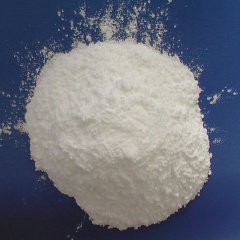Acetate of Lime
| Infobox on Acetate of Lime | |
|---|---|
| Example of Acetate of Lime |  |
| Facts | |
| Origin | All over |
| Stowage factor (in m3/t) | Bags: 1,76 m3/t, 62 ft<sup)3/t |
| Humidity / moisture | - |
| Ventilation | - |
| Risk factors |
|
Acetate of Lime
Description
The chemical compound calcium acetate is the calcium salt of Acetic Acid. Its standard name is calcium acetate, while calcium ethanoate is the systematic IUPAC name. An older name is acetate of lime. The anhydrous form is very hygroscopic; therefore the monohydrate is the common form.
If an alcohol is added to a saturated solution of calcium acetate, a semisolid, flammable gel forms that is much like "canned heat" products such as Sterno. Chemistry teachers often prepare "California Snowballs", a mixture of calcium acetate solution and ethanol. The resulting gel is whitish in color, and can be formed to resemble a snowball.
Calclacite is a name for calcium acetate chloride pentahydrate, which is treated as mineral species but possess anthropogenic origin.
Properties:
White loose fine powder. Odourless. Taste slightly bitter. Easily absorbing moisture. Heating to 1.6℃ decomposed into CaCO3 and acetone. Soluble in water. Slightly soluble in alcohol.
Storage/shipment/usage
Because it is inexpensive, calcium acetate was once a common starting material for the synthesis of acetone before the development of the cumene process.
Calcium acetate can be prepared by soaking calcium carbonate (found in eggshells, or in common carbonate rocks such as limestone or marble) in vinegar. Since both reagents would have been available pre-historically, the chemical would have been observable as crystals then.
Usage
Calcium acetate is used as a food additive, as a stabilizer, buffer and sequestrant, mainly in candy products. It also neutralizes fluoride in water.
Chelating agent, Antibacterial agents; mildew Stabilizer, Slow granule, More aromatic agent; Preservatives, Fennan; PH regulator, Processing AIDS.
Risk factors
Incompatible with strong oxidizing agents.











